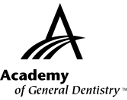|
Exercise No. 336
Subject Code: 132
Anesthesia and Pain Control
The 15 questions for this exercise are based on the article, “Evaluating complications of local anesthesia administration and reversal with phentolamine mesylate in a portable pediatric dental clinic”, on pages 70-76. This exercise was developed by Steven E. Holbrook, DMD, MAGD, in association with the General Dentistry Self-Instruction committee.
|
Reading the article and successfully completing this exercise will enable you to:
- identify the mechanism of action of phentolamine mesylate;
- recognize that comprehensive care with local anesthesia delivered by a school-based portable dental clinic has a low risk of complications; and
- understand that the use of phentolamine mesylate can improve safety outcomes.
|

